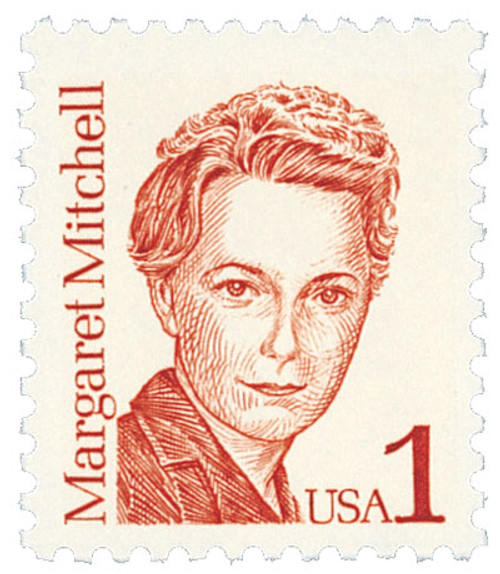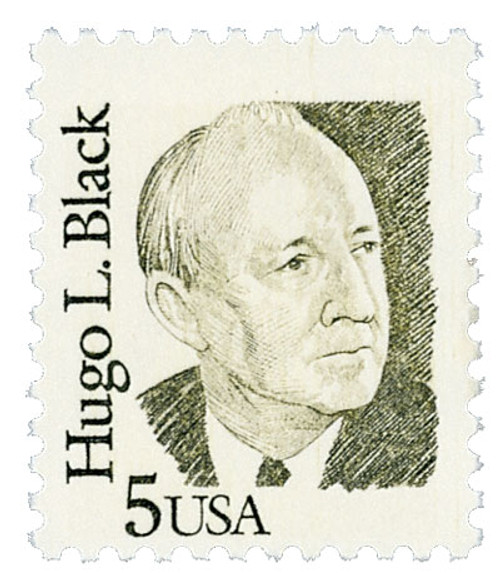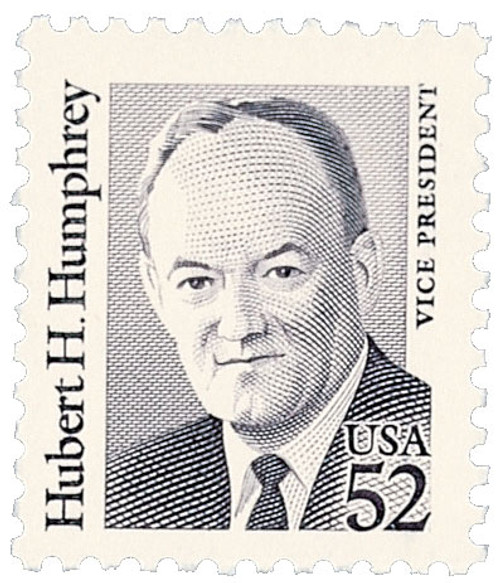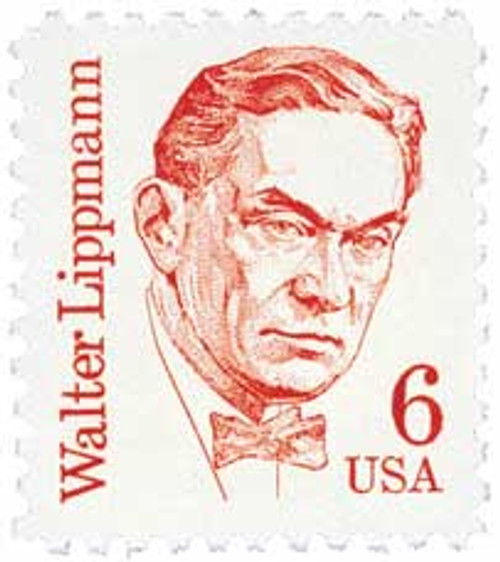
# 1866 - 1982 37c Great Americans: Robert Millikan
U.S. #1866
1982 37¢ Robert Millikan
Great Americans
- 7th stamp in the Great Americans Series
- Issued at the California Institute of Technology, where Millikan served as president for 25 years
- Millikan won the Nobel Prize for physics in 1923 for his experiments studying the charge of electrons
- He was awarded the Presidential Medal of Merit for his work on jet and propulsion systems during World War II
Stamp Category: Definitive
Series: Great Americans
Value: 37¢; two-ounce first-class rate
First Day of Issue: January 26, 1982
First Day City: Pasadena, California
Printed by: Bureau of Engraving & Printing
Printing Method: Engraved
Format: Panes of 100
Perforations: 11 x 10.5
Color: Blue
Why the stamp was issued: To pay the two-ounce first-class rate that went into effect on November 1, 1981. Millikan’s secretary Helen Holloway first proposed a stamp honoring Millikan in 1954. She continued to submit her suggestion every eight months until she received word in 1981 that the Millikan would finally be produced.
About the stamp design: Roy Andersen designed the Robert Millikan stamp, picturing the scientist in a three-quarters view wearing a suit and bowtie.
First Day City: The First Day ceremony for this stamp was held at the California Institute of Technology in Pasadena, California. Millikan served as the institute’s first president from 1920 to 1946.
About the Great Americans Series: The Great Americans Series was created to replace the Americana Series. The new series would be characterized by a standard definitive size, simple design, and monochromatic colors.
This simple design included a portrait, “USA,” the denomination, the person’s name, and in some cases, their occupation or reason for recognition. The first stamp in the new series was issued on December 27, 1980. It honored Sequoyah and fulfilled the new international postcard rate that would go into effect in January 1981.
The Great Americans Series would honor a wider range of people than the previous Prominent Americans and Liberty Series. While those series mainly honored presidents and politicians, the Great Americans Series featured people from many fields and ethnicities. They were individuals who were leaders in education, the military, literature, the arts, and human and civil rights. Plus, while the previous series only honored a few women, the Great Americans featured 15 women. This was also the first definitive series to honor Native Americans, with five stamps.
The Bureau of Engraving and Printing (BEP) produced most of the stamps, but private firms printed some. Several stamps saw multiple printings. The result was many different varieties, with tagging being the key to understanding them. Though there were also differences in perforations, gum, paper, and ink color.
The final stamp in the series was issued on July 17, 1999, honoring Justin S. Morrill. Spanning 20 years, the Great Americans was the longest-running US definitive series. It was also the largest series of face-different stamps, with a total of 63.
Click here for all the individual stamps and click here for the complete series.
History the stamp represents: Physicist Robert Andrews Millikan was born on March 22, 1868, in Morrison, Illinois.
At the end of his sophomore year at Oberlin College, Millikan’s Greek professor asked him to teach elementary physics the following year. At first, he was concerned because he didn’t know physics at all. However, his professor reassured him that his top performance in the Greek class would enable him to teach physics.
Millikan then spent his summer studying physics. He later recalled “I doubt if I have ever taught better in my life than in my first course in physics in 1889. I was so intensely interested in keeping my knowledge ahead of that of the class that they may have caught some of my own interest and enthusiasm.” Millikan held an enthusiasm for education for the rest of his life. He went on to coauthor a series of popular introductory textbooks that were unlike others of the day. Millikan’s books approached physics the same way physicists did and offered homework problems with understandable conceptual questions, as opposed to requiring students to only put numbers into formulas.
Millikan went on to earn his bachelor’s degree in 1891 and the first doctorate in physics from Columbia University in 1895. Afterward, he became a professor at the University of Chicago. It was here that he worked with his graduate student, Harvey Fletcher, on the oil drop experiment to measure the charge of an electron.
To do so, they balanced the “downward gravitational force with the upward drag and electronic forces” on small drops of oil placed between two metal electrodes. As the oil’s density was known, the oil drops’ mass and forces could be calculated by their radii. After repeating the experiments several times, they confirmed that the charges were all multiples of a base value. They proposed this value was the charge of a single electron. This work, which began in 1909, also helped to prove Albert Einstein’s explanation of the photoelectric effect and also led Millikan to find an accurate value of Planck’s constant. Millikan would eventually earn the Nobel Prize for Physics for this work in 1923.
During World War I, Millikan was vice chairman of the National Research Council and helped develop anti-submarine and meteorological devices for the war effort. After the war, he was part of the League of Nations’ Committee on Intellectual Cooperation.
Millikan left the University of Chicago in 1921 to serve as director of the Norman Bridge Laboratory of Physics at the California Institute of Technology (Caltech). There he studied radiation from outer space and concluded it was of extraterrestrial origin. Millikan named this radiation cosmic rays.
Millikan was awarded the Presidential Medal of Merit for his work on jet and propulsion systems during World War II. He also served as chairman of the Executive Council of Caltech until his retirement in 1945. During his years in that role, he helped transform the school into one of America’s leading research institutions.
Millikan died from a heart attack on December 19, 1953. Several schools as well as the Caltech library have been named in his honor.
U.S. #1866
1982 37¢ Robert Millikan
Great Americans
- 7th stamp in the Great Americans Series
- Issued at the California Institute of Technology, where Millikan served as president for 25 years
- Millikan won the Nobel Prize for physics in 1923 for his experiments studying the charge of electrons
- He was awarded the Presidential Medal of Merit for his work on jet and propulsion systems during World War II
Stamp Category: Definitive
Series: Great Americans
Value: 37¢; two-ounce first-class rate
First Day of Issue: January 26, 1982
First Day City: Pasadena, California
Printed by: Bureau of Engraving & Printing
Printing Method: Engraved
Format: Panes of 100
Perforations: 11 x 10.5
Color: Blue
Why the stamp was issued: To pay the two-ounce first-class rate that went into effect on November 1, 1981. Millikan’s secretary Helen Holloway first proposed a stamp honoring Millikan in 1954. She continued to submit her suggestion every eight months until she received word in 1981 that the Millikan would finally be produced.
About the stamp design: Roy Andersen designed the Robert Millikan stamp, picturing the scientist in a three-quarters view wearing a suit and bowtie.
First Day City: The First Day ceremony for this stamp was held at the California Institute of Technology in Pasadena, California. Millikan served as the institute’s first president from 1920 to 1946.
About the Great Americans Series: The Great Americans Series was created to replace the Americana Series. The new series would be characterized by a standard definitive size, simple design, and monochromatic colors.
This simple design included a portrait, “USA,” the denomination, the person’s name, and in some cases, their occupation or reason for recognition. The first stamp in the new series was issued on December 27, 1980. It honored Sequoyah and fulfilled the new international postcard rate that would go into effect in January 1981.
The Great Americans Series would honor a wider range of people than the previous Prominent Americans and Liberty Series. While those series mainly honored presidents and politicians, the Great Americans Series featured people from many fields and ethnicities. They were individuals who were leaders in education, the military, literature, the arts, and human and civil rights. Plus, while the previous series only honored a few women, the Great Americans featured 15 women. This was also the first definitive series to honor Native Americans, with five stamps.
The Bureau of Engraving and Printing (BEP) produced most of the stamps, but private firms printed some. Several stamps saw multiple printings. The result was many different varieties, with tagging being the key to understanding them. Though there were also differences in perforations, gum, paper, and ink color.
The final stamp in the series was issued on July 17, 1999, honoring Justin S. Morrill. Spanning 20 years, the Great Americans was the longest-running US definitive series. It was also the largest series of face-different stamps, with a total of 63.
Click here for all the individual stamps and click here for the complete series.
History the stamp represents: Physicist Robert Andrews Millikan was born on March 22, 1868, in Morrison, Illinois.
At the end of his sophomore year at Oberlin College, Millikan’s Greek professor asked him to teach elementary physics the following year. At first, he was concerned because he didn’t know physics at all. However, his professor reassured him that his top performance in the Greek class would enable him to teach physics.
Millikan then spent his summer studying physics. He later recalled “I doubt if I have ever taught better in my life than in my first course in physics in 1889. I was so intensely interested in keeping my knowledge ahead of that of the class that they may have caught some of my own interest and enthusiasm.” Millikan held an enthusiasm for education for the rest of his life. He went on to coauthor a series of popular introductory textbooks that were unlike others of the day. Millikan’s books approached physics the same way physicists did and offered homework problems with understandable conceptual questions, as opposed to requiring students to only put numbers into formulas.
Millikan went on to earn his bachelor’s degree in 1891 and the first doctorate in physics from Columbia University in 1895. Afterward, he became a professor at the University of Chicago. It was here that he worked with his graduate student, Harvey Fletcher, on the oil drop experiment to measure the charge of an electron.
To do so, they balanced the “downward gravitational force with the upward drag and electronic forces” on small drops of oil placed between two metal electrodes. As the oil’s density was known, the oil drops’ mass and forces could be calculated by their radii. After repeating the experiments several times, they confirmed that the charges were all multiples of a base value. They proposed this value was the charge of a single electron. This work, which began in 1909, also helped to prove Albert Einstein’s explanation of the photoelectric effect and also led Millikan to find an accurate value of Planck’s constant. Millikan would eventually earn the Nobel Prize for Physics for this work in 1923.
During World War I, Millikan was vice chairman of the National Research Council and helped develop anti-submarine and meteorological devices for the war effort. After the war, he was part of the League of Nations’ Committee on Intellectual Cooperation.
Millikan left the University of Chicago in 1921 to serve as director of the Norman Bridge Laboratory of Physics at the California Institute of Technology (Caltech). There he studied radiation from outer space and concluded it was of extraterrestrial origin. Millikan named this radiation cosmic rays.
Millikan was awarded the Presidential Medal of Merit for his work on jet and propulsion systems during World War II. He also served as chairman of the Executive Council of Caltech until his retirement in 1945. During his years in that role, he helped transform the school into one of America’s leading research institutions.
Millikan died from a heart attack on December 19, 1953. Several schools as well as the Caltech library have been named in his honor.





















